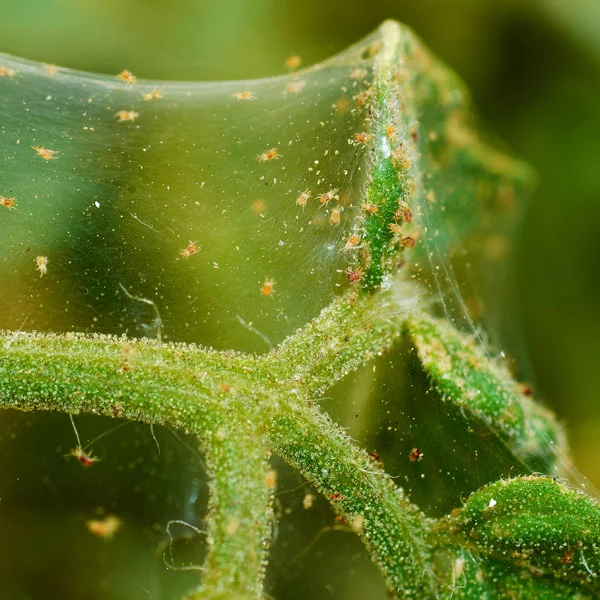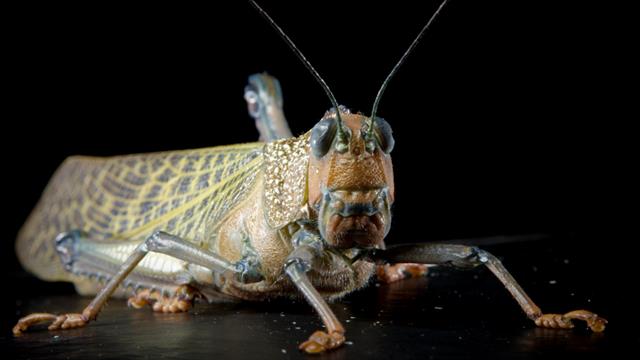Now that you’ve hit vegetative state, we want to keep an eye on your plants to make sure that they stay healthy!

The following is an article produced by Growers Network. This article is for educational purposes only. We do not claim any responsibility for any legal or financial repercussions of your decisions. Always consult with a lawyer or attorney before making a decision that could have a legal consequence!
Pests and Disease
We’d love to assume that everything will go perfectly in your grow, and nothing will attack the plants and harm them. But let’s be honest -- pests always find a way to hamper whatever you’re doing. Even computer scientists are familiar with computer “bugs,” where some of the first computer glitches were caused by actual bugs in their computers!
So let’s head the problem off. In this How to Grow Cannabis post, we’ll discuss a few different pests and some environmentally friendly solutions to them. We’re making a point of encouraging environmentally-friendly prevention tactics, as we believe clean weed is the best weed.

Arthropod Pests
Indoors
Indoors, you generally shouldn’t encounter too many insect pests on the macroscopic scale. If you have bugs getting into your house all the time, you may have a bigger concern on hand. That said, if you’re getting roaches in your house all the time, be careful not to set roach traps anywhere near the cannabis, and should you find any roaches, remove them immediately.
In indoor grows, we do have to worry about mites, particularly spider mites. These microscopic buggers (and I do mean buggers) can ruin your crop. Unfortunately, you can’t see them without a microscope or a magnifying glass. If you want a handheld microscopes, there are some cheap ones available here, or if you want a jeweler's loupe or magnifying glass, there are cheap ones here.

Should you not have a microscope, keep an eye out for any webbing or cobwebs that appear mysteriously on your plants. If you see these, immediately destroy the plant, the pot, and throw out the soil. Spider mites are a nightmare to deal with once you have an infestation.
Prevention
Preventing bugs indoors can be done relatively cheaply and safely.
Diatomaceous Earth (abbreviated as DE) is made up of microscopic skeletons that poke holes in insect exoskeletons, causing them to gradually bleed out and dry up. But it’s almost entirely harmless to mammals unless you start inhaling the stuff. Diatomaceous earth can be spread liberally around the plants. Just be warned though, if you get it wet you will need to add some more. DE can be safely used at any point in the plant’s life cycle.
You can also use essential oils during vegetative state, which plugs up the proboscis of most larger insects, and drowns smaller insects. Essential oils can include a multitude of vegetable-based oils, including:
- Rosemary Oil
- Garlic Oil
- Peppermint Oil
- Clove Oil
- And more!
These oils are non-toxic to humans, and are generally safe to use throughout the vegetative state. However, you should try to avoid using them once you enter flowering.
If you need to go a little bit heavier, Neem Oil is available as well. Try to restrict its use to the early part of veg, and away from flowering state. We’ve heard some anecdotal reports that Neem Oil may be responsible for cannabis hyperemesis syndrome, but there hasn’t been a conclusive study performed yet.
Outdoors
Outdoors insect pests will vary based on where you live. If you’re not certain what the pest is, or how to treat it, call up the closest university or agricultural research institute and ask about it.

The most common insect pests for outdoors cannabis are grasshoppers and “boring” caterpillars. Other than preventative sprays and diatomaceous earth, you can try polymer barriers to prevent infiltration by these pests.
Fungi
Fungi and fungal spores are nearly ubiquitous around the planet. Even NASA can’t get rid of them entirely. However, you can prevent the formation of fungus through a few simple steps:
- Keep water off of the plant’s leaves. Liquid water is a breeding ground for fungus. If you need to water the plant, only water the soil or the roots.
- Drop your humidity levels if you live in a humid environment. Normally, air conditioning units remove humidity from the air, but you may want to buy a specialized dehumidification system to go with your plants, because they also humidify the air. You can also buy desiccant packs, which you’ll need to recharge or replace eventually.
- Add some fans. By increasing airflow, you prevent the chance for microclimates to form and remove the extra humidity produced by the plant’s transpiration.
Should any issues arise, consult with your state or city officials about what your options are with regards to pesticides. Some locales allow the use of sulfur dust to treat fungus, which is generally considered safe. If the problem is really bad, you may just need to burn the plant, dump the soil, sanitize the pot, and start over. Many fungicides are extremely harsh and dangerous to humans, and we don’t recommend most of them for that reason.
Microbes
Generally speaking, when you’re growing in soil, you shouldn’t have too many issues with microbes. Soil is a self-regulating environment that generally prevents excessive growth of certain microbes. That said, it can’t hurt to head a problem off before it happens. Several companies provide microbial supplements and mycorrhizae supplements.
Was there something we didn’t mention? Put it in the comments below, and we’ll see what we can do to add it to our list!
10 Best Gift Ideas for Cannabis Connoisseurs and Growing Aficionados (2022)
December 7, 2022Developing and Optimizing a Cannabis Cultivation System
December 14, 2021Dealing with Insomnia: How Can CBD Help?
December 10, 2020Your Guide to Sleep and CBD
December 7, 2020
Do you want to receive the next Grower's Spotlight as soon as it's available? Sign up below!

Do you have any questions or comments?

About the Author
Hunter Wilson is a community builder with Growers Network. He graduated from the University of Arizona in 2011 with a Masters in Teaching and in 2007 with a Bachelors in Biology.